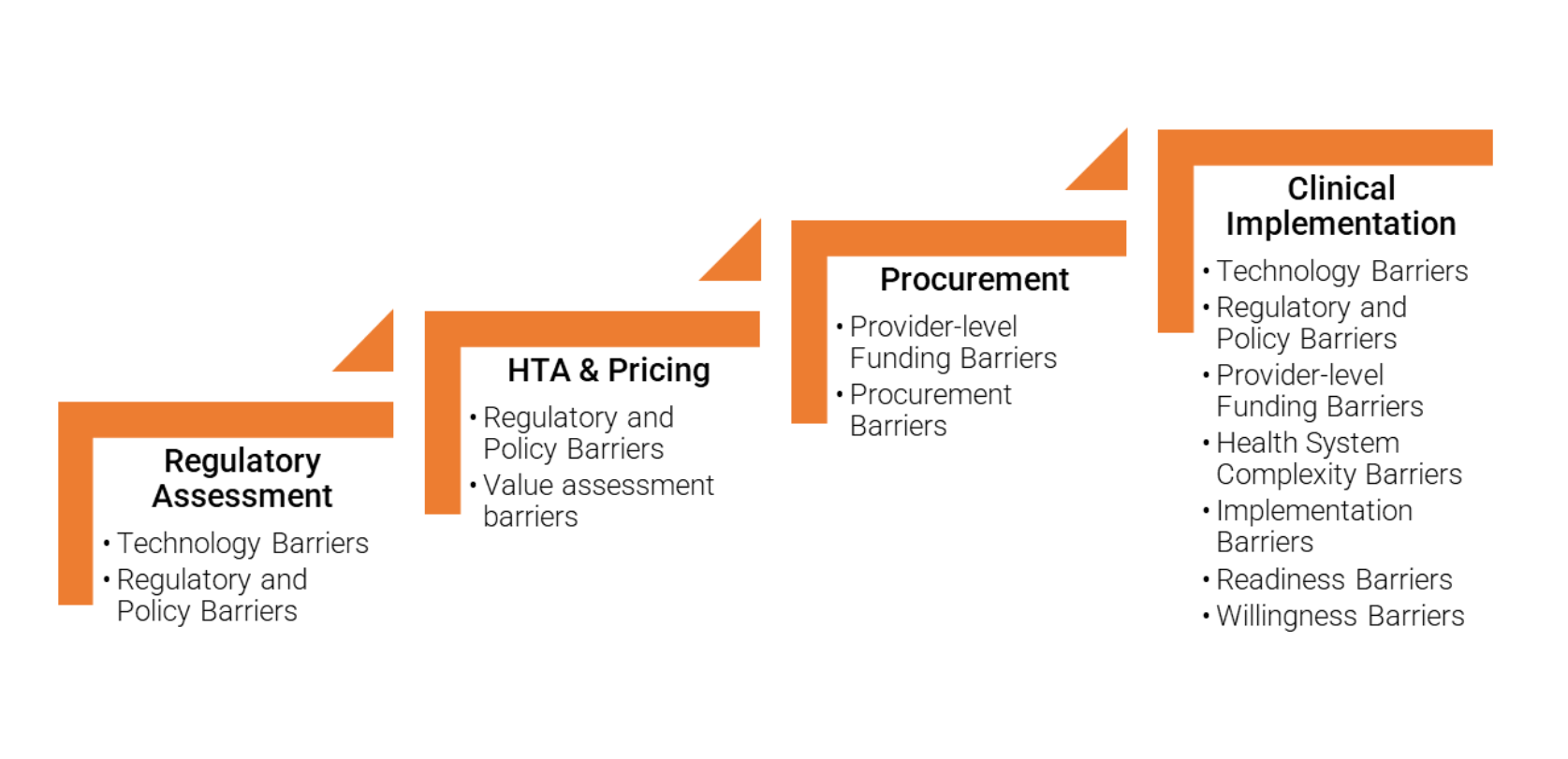Unlocking the Value of Combination Therapies

Many healthcare systems globally are under pressure as they emerge from the COVID-19 pandemic. Poor economic conditions and escalating costs are placing additional financial burdens on public and private payers alike. Furthermore, a considerable amount of waste and inefficiency exists within these systems.
This report revisits the innovation-efficiency debate and acknowledges the contribution of innovation to efficiency in the context of growing pressures and limitations on health systems. Additionally, we discuss nine barriers that hinder realising more significant efficiency gains from innovation and consider how they can be overcome. The barriers concern the complete innovation adoption pathway, including regulatory, HTA & pricing, procurement, and clinical implementation phases.

Figure 1 Barriers that concern the innovation adoption pathway
Finally, we analyse the potential of stakeholder collaboration in overcoming the identified barriers to adopting health system innovation through case studies on multistakeholder partnerships, including the advanced therapy treatment centres (ATTC) network, Fast-Track Cities London, and the PrEP Think Tank initiative. Our analysis shows that multistakeholder partnerships should be considered when solutions require the pooling of knowledge across different stakeholders, when bringing innovation to patients safely and effectively requires coordination among different stakeholders, or to help overcoming divergences in objectives/ incentives among various stakeholders.as a solution to overcoming barriers that impede innovation adoption and efficiency improvements.
This report ‘’Innovation for Health System Efficiency and Improvement’’ was commissioned and funded by Gilead.
Innovation for Health System Efficiency and Improvement
